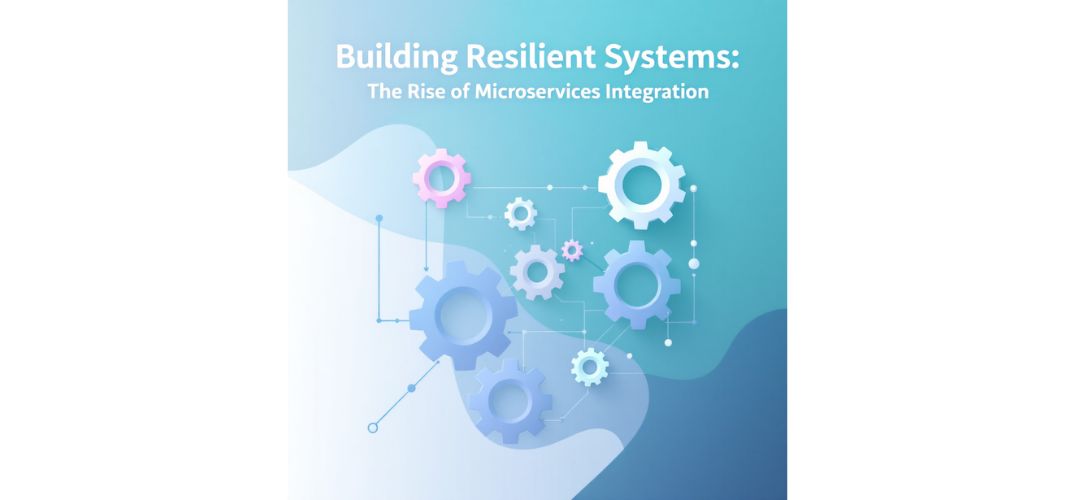In this modern era, Tejaswi Adusumilli, a seasoned researcher in enterprise system architecture, brings a deep understanding of evolving integration frameworks. With extensive experience in analyzing distributed systems, She offers an insightful perspective on how modern organizations can adapt to a rapidly changing digital environment.
A New Blueprint for Enterprise Evolution
Modern businesses are no longer static entities; they are dynamic organisms that must continuously adapt. At the core of this evolution lies a silent revolution—microservices architecture. Breaking away from monolithic and service-oriented predecessors, microservices present a modular approach, allowing enterprises to build systems that are nimble, scalable, and tailored to business capabilities. Unlike earlier models, microservices thrive on decentralization and independence, with each service representing a bounded context aligned closely with domain logic.
Architectural Anatomy of Independence
What sets microservices apart is their focused granularity. Each service functions independently, equipped with its own data repository, logic, and communication interface. This structural independence ensures that services can be scaled, deployed, and maintained autonomously. Moreover, they communicate using lightweight protocols—REST, gRPC, or message queues—fostering an agile network of specialized components. The emphasis on domain-driven design principles further refines this architecture, enabling services to mirror business structures instead of technical silos.
Integrating Without Friction
Enterprise integration in a microservices landscape demands more than just breaking down applications. It requires smart intermediaries. API gateways emerge as pivotal facilitators, offering unified access points while managing authentication, routing, and payload transformation. Service discovery tools ensure seamless communication even as instances dynamically change, and inter-service communication protocols—both synchronous and asynchronous—allow for varied interaction patterns based on business requirements.
To manage data consistency in a distributed setup, patterns like Saga, CQRS, and event sourcing provide robust strategies. These methods accept the trade-offs of availability and consistency, providing eventual harmony in systems where strict transactional boundaries are impractical.
Events, Not Orders: Rethinking Orchestration
A standout innovation in this architectural shift is event-driven architecture (EDA). Here, services emit events that signal state changes, to which other services respond as needed. This decouples coordination logic from any one component, enabling services to evolve independently. Supported by platforms like Kafka or EventBridge, EDA scales naturally, ensuring resilience without adding complexity to individual services.
Legacy Systems, Modern Bridges
While innovation paves new roads, legacy systems still stand tall. Integrating them is less about replacement and more about careful transformation. The “Strangler Fig” pattern allows for gradual migration, while anti-corruption layers protect the integrity of new microservices from legacy quirks. Change Data Capture (CDC) techniques bridge databases, streaming real-time changes from older systems into modern services.
From Teams to Tribes: Organizational Shifts
The success of microservices is as cultural as it is technical. Adopting this architecture demands rethinking team structures. The transition from function-based teams to product-aligned units encourages full ownership of a service, aligning development cycles with delivery goals. Governance follows suit, shifting from gatekeeping to enabling—platform teams provide infrastructure and standards, while service teams retain autonomy.
Automation is key: CI/CD pipelines, infrastructure as code, and observability platforms form the backbone of this decentralized model. Site reliability engineering (SRE) principles introduce error budgets and service level objectives, striking a balance between agility and stability.
Looking Ahead: Smart, Serverless, and Sustainable
Microservices continue to evolve. Serverless computing pushes the envelope further, offering even smaller deployment units and offloading infrastructure concerns. AI-enhanced service management promises predictive maintenance and autonomous scaling. Meanwhile, service mesh technologies simplify communication, observability, and security across services—turning microservices ecosystems into well-coordinated symphonies.
Sustainability is also stepping into the spotlight. As digital systems scale, so does their environmental footprint. Microservices offer opportunities for energy efficiency through targeted resource allocation and optimized deployment strategies.
In conclusion, as organizations navigate the complexities of digital transformation, microservices stand out as a compelling solution that fuses flexibility, resilience, and business alignment. By dismantling monoliths and embracing service autonomy, enterprises unlock not just technical advantages, but cultural and strategic growth. Emerging trends suggest this architectural model will continue to adapt, guided by principles of modularity and continuous innovation. Tejaswi Adusumilli’s exploration into microservices reveals a framework that isn’t just a technical upgrade—it’s a reimagining of enterprise adaptability in the digital age.





























